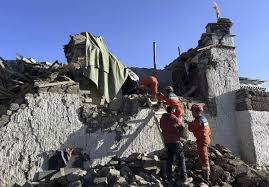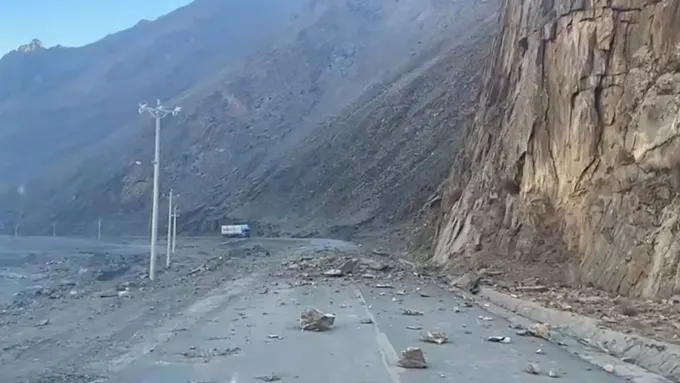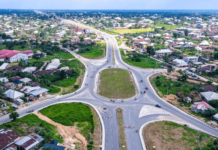A devastating earthquake in China’s remote Tibet region has left at least 53 people dead, 62 injured, and over 1,000 homes damaged, state media reported on Tuesday. The 6.8-magnitude quake struck Dingri County, Xigaze, at 9:05 a.m. (0105 GMT), with tremors felt in neighboring Nepal and parts of India.
Destruction and Rescue Efforts
Videos from China’s state broadcaster CCTV showed collapsed buildings and rubble-strewn streets in the aftermath of the disaster. Residents were seen fleeing shaking stores as shelves toppled, scattering goods across the floor. Rescue workers braved the cold to distribute blankets and aid to survivors.
Temperatures in the high-altitude county, home to about 62,000 people near Mount Everest, dropped to minus 18 degrees Celsius (0.4°F) on Tuesday evening, complicating relief efforts. Central authorities dispatched cotton tents, quilts, and other cold-weather supplies to the area.
Chinese President Xi Jinping called for “full-scale search and rescue efforts, minimizing casualties, and ensuring the safety and warmth of affected residents throughout the winter,” according to CCTV.
Regional Tremors and Geological Impact
The quake was the strongest recorded within a 200-kilometer radius in the past five years, the China Earthquake Networks Center (CENC) reported. Neighboring regions, including Nepal’s Kathmandu and India’s Bihar state, felt the tremors.

“It shook quite strongly here, and everyone is awake,” said Jagat Prasad Bhusal, a government official in Nepal’s Namche region near Mount Everest. Nepal’s Home Ministry confirmed no damage or casualties but deployed security forces to monitor the situation.
Historical Context
Earthquakes are common along the tectonic faultline where the Indian and Eurasian plates converge, forming the Himalayas. In 2015, Nepal experienced a catastrophic 7.8-magnitude quake that killed nearly 9,000 people and destroyed over half a million homes.
China has also faced severe quakes in recent years, including one in December 2023 that killed 148 people in Gansu province and another in 2014 that claimed more than 600 lives in Yunnan province.
Global Solidarity
As rescue operations continue, regional neighbours and international agencies have expressed readiness to assist China in managing the aftermath of this tragic event.




